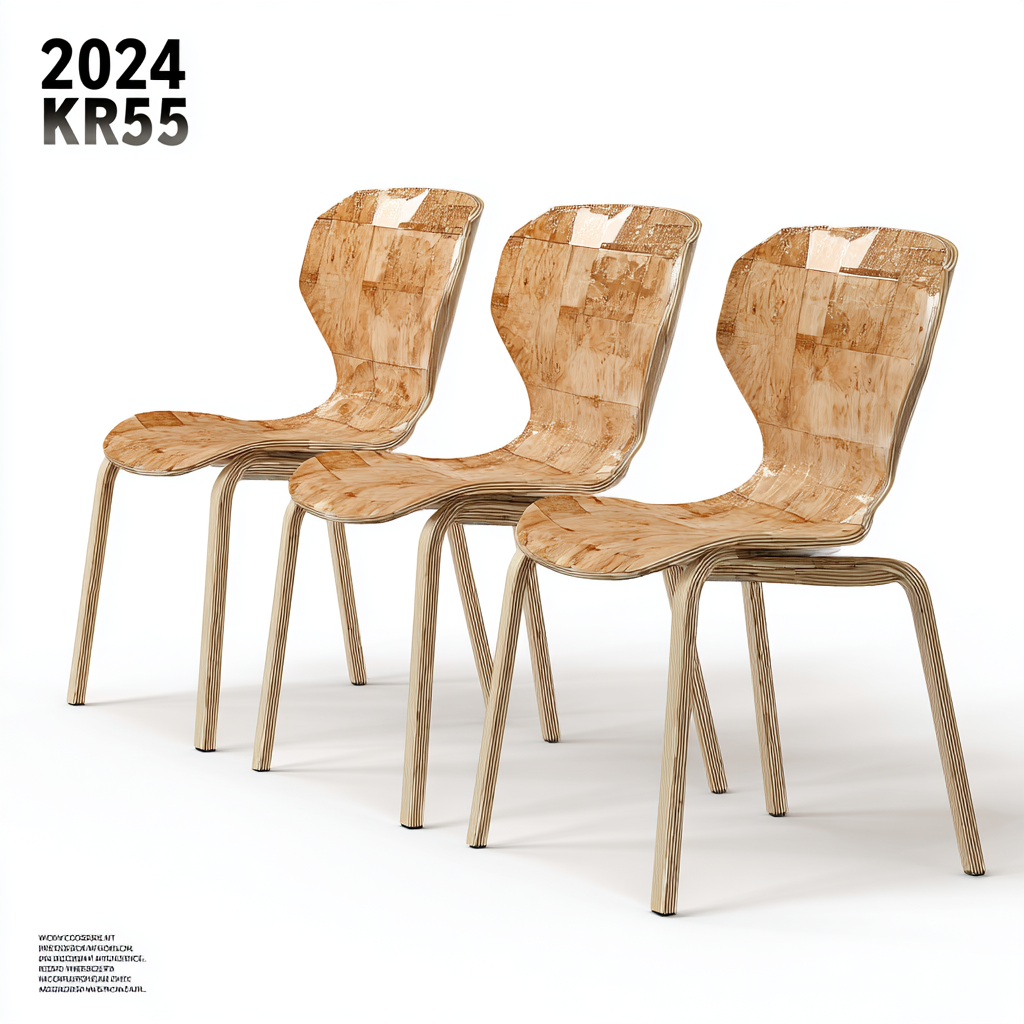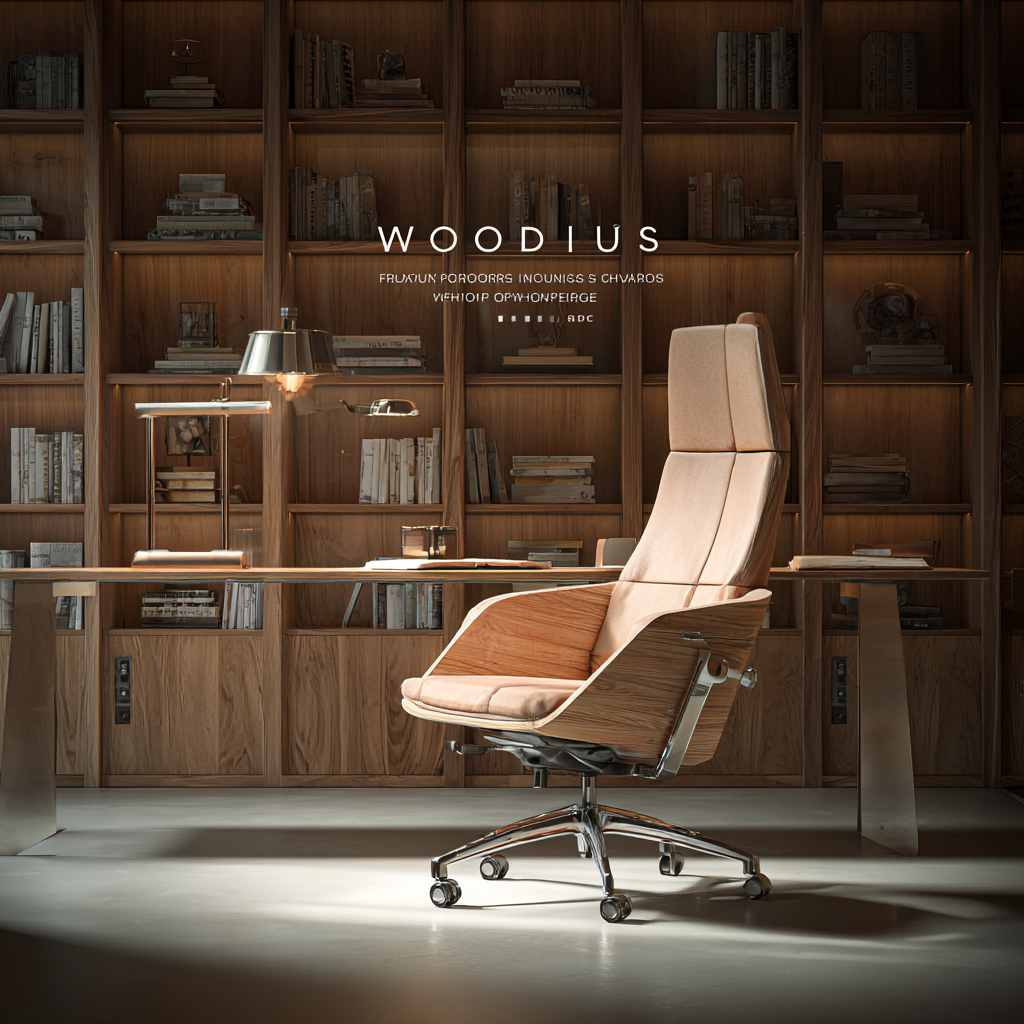
2025 Wood Chair Innovations Transforming Comfort and Sustainability for Modern Workspaces
As we look towards 2025, the furniture industry is undergoing a transformative shift, particularly in the realm of wood chairs, driven by the dual demands for enhanced comfort and sustainability in modern workspaces. According to market analysis reports, the global wooden furniture market is expected to reach $200 billion by 2025, with a significant portion led by innovative wood chair designs that blend ergonomic features with eco-friendly materials. Research indicates that 60% of employees prioritize comfort in office furniture, leading manufacturers to explore advanced technologies in sustainable wood sourcing and design. These innovations not only address workplace wellness but also align with the increasing corporate responsibility towards environmental stewardship. This blog will delve into the latest trends and examples in wood chair innovations that are set to redefine our work environments in the coming years.

Innovative Wooden Chair Designs Shaping the Future of Workplace Comfort
In the rapidly evolving landscape of modern workspaces, innovative wooden chair designs are at the forefront of enhancing workplace comfort. As remote and flexible working arrangements become the norm, the demand for furniture that seamlessly blends aesthetics and ergonomics is paramount. Designers are now exploring sustainable materials and manufacturing processes that prioritize not just style but also the physical well-being of users. The integration of smart technologies into wooden chair designs adds another layer of customization, allowing users to monitor their posture and adjust seating angles for optimal comfort throughout their workday.

Furthermore, these innovations reflect a growing consciousness about sustainability in the workplace. Many brands are opting for reclaimed wood and environmentally friendly finishes that reduce their carbon footprint while still delivering on design and functionality. Chairs that support not only the user’s health but also the planet create a holistic approach to office furniture. As these wooden chair innovations take shape, they promise to reshape the very essence of workplace design, ensuring that comfort and sustainability go hand in hand for the future of our working environments.
Sustainable Materials and Manufacturing Techniques in Modern Chair Production
Modern workspaces are witnessing a revolutionary shift as innovative wood chair designs embrace sustainability without compromising on comfort. At the forefront of this transformation are sustainable materials that prioritize eco-friendliness while maintaining durability. Chair manufacturers are increasingly utilizing reclaimed wood, bamboo, and rapidly renewable resources, ensuring that the production process leaves a minimal ecological footprint. This commitment not only enhances the aesthetic appeal of office environments but also aligns with the growing demand for responsible consumption.
In addition to the materials, advanced manufacturing techniques have emerged, streamlining production while reducing waste. Techniques like CNC machining and 3D printing allow for precise designs that utilize less material and energy. These methods enable the creation of ergonomic chairs tailored to the needs of the modern workforce, fostering productivity and well-being. Innovations in finishing processes, such as water-based adhesives and non-toxic varnishes, further contribute to healthier indoor air quality. As we move toward an era of increased environmental consciousness, these advancements in wood chair production signify a promising future that blends comfort with sustainability, creating workspaces that inspire creativity and well-being.

The Role of Ergonomics in Enhancing Productivity and Well-being
As the modern workspace evolves, the significance of ergonomics in furniture design, particularly in wood chairs, becomes increasingly evident. Research indicates that ergonomic office environments can boost productivity by up to 20%, demonstrating the critical connection between comfort and performance. A well-designed chair promotes good posture, reducing the risk of musculoskeletal disorders, which affect nearly 30% of workers, according to the National Institute for Occupational Safety and Health (NIOSH). Innovations in wood chair designs in 2025 are not merely aesthetic; they embody features that support increased agility and adaptability in work settings.
Moreover, sustainability is an integral aspect of contemporary ergonomic innovations. The incorporation of sustainably sourced materials not only addresses environmental concerns but also enhances the overall appeal of ergonomic furniture. A report from the Global Workspace Association highlights that 87% of employees valued sustainability in their workplace arrangements. Wood chairs that combine ergonomic support with eco-friendly materials foster a healthier work environment, leading to enhanced employee well-being and a significant reduction in absenteeism related to physical discomfort. By prioritizing ergonomics, companies can create more productive, sustainable, and satisfied workforces.
2025 Wood Chair Innovations Transforming Comfort and Sustainability for Modern Workspaces
| Feature | Description | Benefit | Sustainability Aspect |
|---|---|---|---|
| Ergonomic Design | Chairs designed with adjustable features for lumbar support and posture. | Reduces strain and fatigue, enhancing productivity. | Made from sustainably sourced wood, reducing carbon footprint. |
| Eco-Friendly Finishes | Non-toxic, water-based finishes that meet health standards. | Safer indoor air quality for improved worker well-being. | Utilizes recyclable materials in the production process. |
| Modular Components | Chairs that can be easily reconfigured or upgraded. | Allows for customization to meet individual needs. | Reduces waste by promoting repair and longevity. |
| Biodegradable Materials | Use of natural fibers and adhesives in construction. | Less environmental impact upon disposal. | Promotes circular economy in furniture design. |
| Smart Technology Integration | Incorporation of sensors to monitor posture and activity. | Encourages healthier sitting habits and breaks. | Minimizes energy consumption with intelligent design features. |
The Shift Towards Eco-Friendly Furniture: Opportunities for Exporting Chinese Designs
The shift towards eco-friendly furniture is gaining momentum, presenting significant opportunities for exporting innovative Chinese designs. As sustainability becomes a crucial consideration for consumers and businesses alike, the demand for environmentally conscious products continues to rise. China is well-positioned to capitalize on this trend, particularly in the wood furniture sector, which has traditionally relied on natural materials that are both renewable and biodegradable. Exporting these designs not only meets global demand but also showcases China's commitment to sustainable practices.
Recent displays of original designs and cutting-edge innovations at the China International Furniture Fair (CIFF) underscore this shift towards eco-friendliness. With the contract furniture market projected to reach USD 167.7 billion by 2025, businesses in the wood and furniture industry are encouraged to invest in research and development to enhance their offerings. This focus on innovation, coupled with a policy environment supportive of exports, can facilitate the growth of China's furniture industry on the global stage. As companies refine their operations and embrace sustainable materials, they will be better equipped to meet the evolving preferences of consumers in modern workspaces.
Emerging Trends in Workspace Aesthetics: Blending Functionality with Style
As modern workspaces continue to evolve, the design of furniture, particularly chairs, is at the forefront of this transformation. The emerging trend to blend functionality with style has led to innovative wood chair designs that not only prioritize comfort but also enhance the aesthetic appeal of work environments. Designers are now focused on creating chairs that are visually striking, incorporating natural wood finishes and minimalist forms that resonate with contemporary tastes. This shift elevates the overall workspace experience, making it more inviting and conducive to productivity.
Moreover, sustainability has become a crucial consideration in workspace aesthetics. The use of responsibly sourced wood not only contributes to the environmental goals of organizations but also reflects a commitment to quality craftsmanship. Newer designs incorporate eco-friendly materials and methods, ensuring that each piece is both stylish and responsible. This transformation is evident in various styles and finishes, allowing businesses to select chairs that complement their branding while promoting a message of sustainability. The result is a work environment that is not only functional but also a true reflection of modern values and aesthetics.